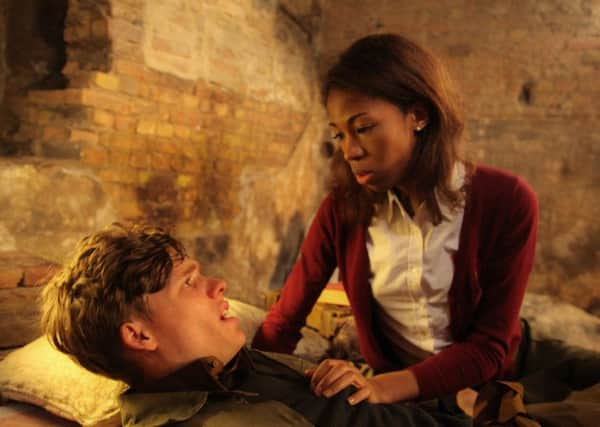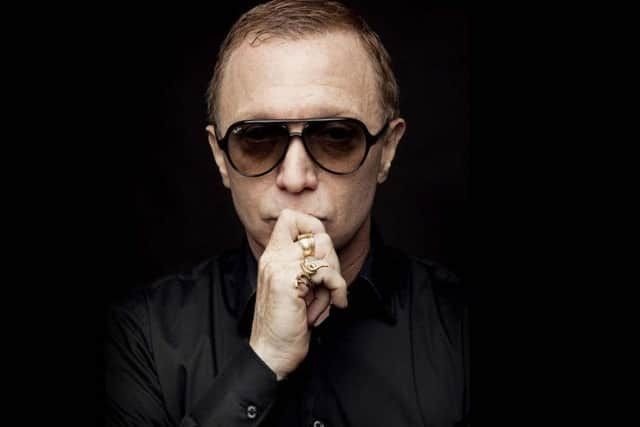Film interview '“ Radical filmmaker Bruce LaBruce: '˜I do consider pornographers as artists'


Opening this year’s Scottish Queer International Film Festival (SQIFF), Bruce LaBruce’s provocatively titled new film The Misandrists couldn’t be timelier. Revolving around a lesbian terrorist cell called the Female Liberation Army (FLA)as they plot to topple the patriarchy, the Canadian artist and filmmaker’s riotous, sexually liberated, politically incorrect opus arrives at a moment when gender politics and LGBT+ issues have become a regular fixture of both the mainstream news cycle and the pop culture landscape.
“It’s funny,” says LaBruce, on a Skype call from his home in Toronto. “I watched the first season of The Handmaid’s Tale and it was kind of interesting that it covers some of the same territory. Instead of a dystopian world in which women are literally enslaved and subjugated to men, mine is a more utopian world in which women reject men and try to forge their own society.”
Advertisement
Hide AdSet in a girls’ school run by a former porn star called Big Mother, and featuring a subplot in which its most secretive pupil provides shelter to an injured male anarchist sympathetic to their cause, The Misandrist is, admits LaBruce, also a loose remake of Don Seigel’s The Beguiled, a film that was updated more recently (and more officially) by Sofia Coppola – albeit without the witty digressions into hardcore feminist theory, hardcore pornography and hardcore gore that LaBruce’s spin on the premise brings to the table.


“I can dig pretty deeply into ideas about gender and feminism that you wouldn’t see so much in a mainstream film,” agrees LaBruce, name-checking the likes of Simone de Beauvoir and Ulrike Meinhof. The latter’s transition from radical feminist to terrorist leader of the Red Army Faction is also one of the more blatant inspirations for his outré satire, which, LaBruce says, is intended as a critique of certain aspects of radical feminism while also being supportive of the spirit of feminism. The title plays into that. “It’s kind of a hyperbolic expression of a certain kind of radical feminism,” elaborates LaBruce. “But it’s also a kind of rebalancing of history. After millennia of subjugation and patriarchal oppression, it’s a cathartic thing for women to be able to express that kind of anger and hatred. That’s why the over-the-top castration scene is there.” Oh yeah, there’s an over-the-top castration scene. “It’s meant to be cathartic reaction against the weight of history and oppression of women.”
That kind of outrageous expression of serious ideas is one of the hallmarks of his work. He also makes explicit and frequent use of hardcore porn and views gay porn stars as “the last bastion of gay radicalism” in an era of mainstream assimilation. In The Misandrists, the FLA celebrates pornography as an “honourable expression of sexuality”, a path to liberation and an artform that’s “inherently hostile to the dominant order”. LaBruce doesn’t disagree.
“I do consider pornographers as artists. Some of them are bad artists, but I still think it’s a form of artistic expression.” Indeed, he sees his work as part of a tradition that encompasses the gay avant-garde (Andy Warhol’s Blue Movie and Jean Genet’s Un Chant d’Amour are both porn films, he reasons), the work of 1970s porn directors such as Peter De Rome, and the gay liberation movement of the 1970s and 1980s. “The engine of gay liberation was sex,” he says, “militant, unapologetic gay sex. And that’s been kind of forgotten.”
Not by him. He’s been using sex in this way since he emerged from academia and immersed himself in Toronto’s punk scene. “In the context of punk, making queer films was very controversial because at that time there was a certain strain of homophobia in the punk/skinhead scene. So I started using hardcore gay porn imagery as kind of a political gesture.”


With films such as No Skin of My Ass (which Kurt Cobain declared his favourite film) and Hustler White (which is also screening at SQIFF), he became a key figure of the New Queer Cinema movement of the early 1990s. Though his more explicit use of sexual imagery meant he didn’t enjoy the same crossover success as contemporaries such as Todd Haynes, Gus Van Sant, Gregg Araki and Rose Troche – whose movies were more readily embraced within the thriving Sundance-led indie film scene of the day – LaBruce was happy his work reached the audiences they did, something he attributes to the parallel rise of specialist lesbian and gay film festivals. Ironically, some of those festivals now refuse to show his work. “A lot of the mainstream gay film festivals are not showing The Misandrists because they think it’s politically incorrect… One of the main gay film festivals said they couldn’t programme a film about lesbians by a gay man, which I think is preposterous.”
Advertisement
Hide AdBut then he’s pretty despondent about the Left as a whole. “I identify now as a radical centrist,” he says.
He hasn’t, however, been left out in the cold. In fact, he gained some mainstream artistic legitimacy in 2015 when New York’s Museum of Modern Art did a retrospective of his work. “They did get some flack for it,” he quips. Nevertheless, he knows the pornographic content of his work remains a barrier to many. “In some ways I’ve always been considered too pornographic for the art world and too artistic for the porn world. I’m kind of in this weird netherworld in the middle.”
Maybe he’s just destined to be a radical centrist.
“Exactly!”
The Misandrists screens at the Scottish Queer International Film Festival on 27 September, www.sqiff.org